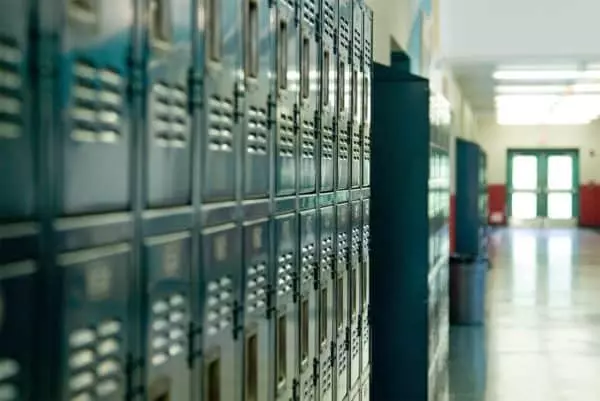
Millions of asbestos fibers have been found throughout the Philadelphia school district, according to a joint investigation by The Inquirer and Daily News. The investigation sought to uncover dangerous substances in Philadelphia schools, including asbestos, lead, and mold.
Teachers from 11 schools collected samples, which were then analyzed by the International Asbestos Testing Laboratories in southern New Jersey. Alarming levels of asbestos fibers were found. Health experts state any amount of asbestos over 100,000 fibers per square centimeter is cause for concern, and some of the schools had millions of asbestos fibers present. Despite having certified asbestos professionals the district can call in to remove and repair asbestos, little has been done to make appropriate repairs.
Asbestos is common in schools built before the 1980s since it’s fire resistant and provides good insulation. The fibers are present in a variety of materials, from pipe insulation to floor tiles and ceiling insulation. In 1986 federal lawmakers enacted the Asbestos Hazard Emergency Response Act (AHERA), which requires school districts to inspect their buildings for asbestos-containing materials and prepare plans for action to prevent and reduce asbestos hazards. This includes locating asbestos and ensuring it’s not damaged, encapsulating it to prevent the material from becoming friable (easily crushed or crumbled), or removing the material if it poses a health hazard.
The findings in Philadelphia have raised concerns about the health of students and teachers in the district. Asbestos is known to cause a variety of health issues, including mesothelioma, a deadly form of cancer. The needle-like fibers are easily stirred up and can linger in the air for hours to days, making them easily inhaled. A number of tested spaces with high levels of asbestos were areas students frequent, such as hallways, classrooms, and gyms. But asbestos-related diseases can take decades to develop and show symptoms, so the health effects of any potential exposure remain unknown.
A top concern is the inability of the school district to repair and remove asbestos when it’s found. Records from the last five years show reports of asbestos problems, many being rated “high priority,” yet remaining in disrepair. Some repairs that were undertaken resulted in slipshod work, and in one case, even increased the amount of asbestos dust in a sample area.
The school district has called the newspapers’ reports into question. According to school officials, the method of testing used, known as dust wipe sampling, isn’t as accurate as air testing. Dust wipe samples involve taking a sample of surface dust and determining how many asbestos fibers are present on that surface. Air testing determines how many asbestos fibers are in the air, and therefore at risk of being inhaled.
Outside experts argue the importance of dust wipe samples and insist that the results shouldn’t be dismissed. Experts say any result of 100,000 fibers per square centimeter or higher in surface dust should be addressed immediately. Some school locations revealed millions of asbestos fibers per square centimeter.
Outrage over the high levels of asbestos fibers caused the Philadelphia school district to act at Olney Elementary School, one of the 11 schools tested. Damaged asbestos areas have been sealed off and students have been relocated from classrooms with high asbestos levels. While this is a step in the right direction, there are still dozens of schools to be repaired in Philadelphia alone, with asbestos still lurking in hundreds of other older school buildings around the country.




